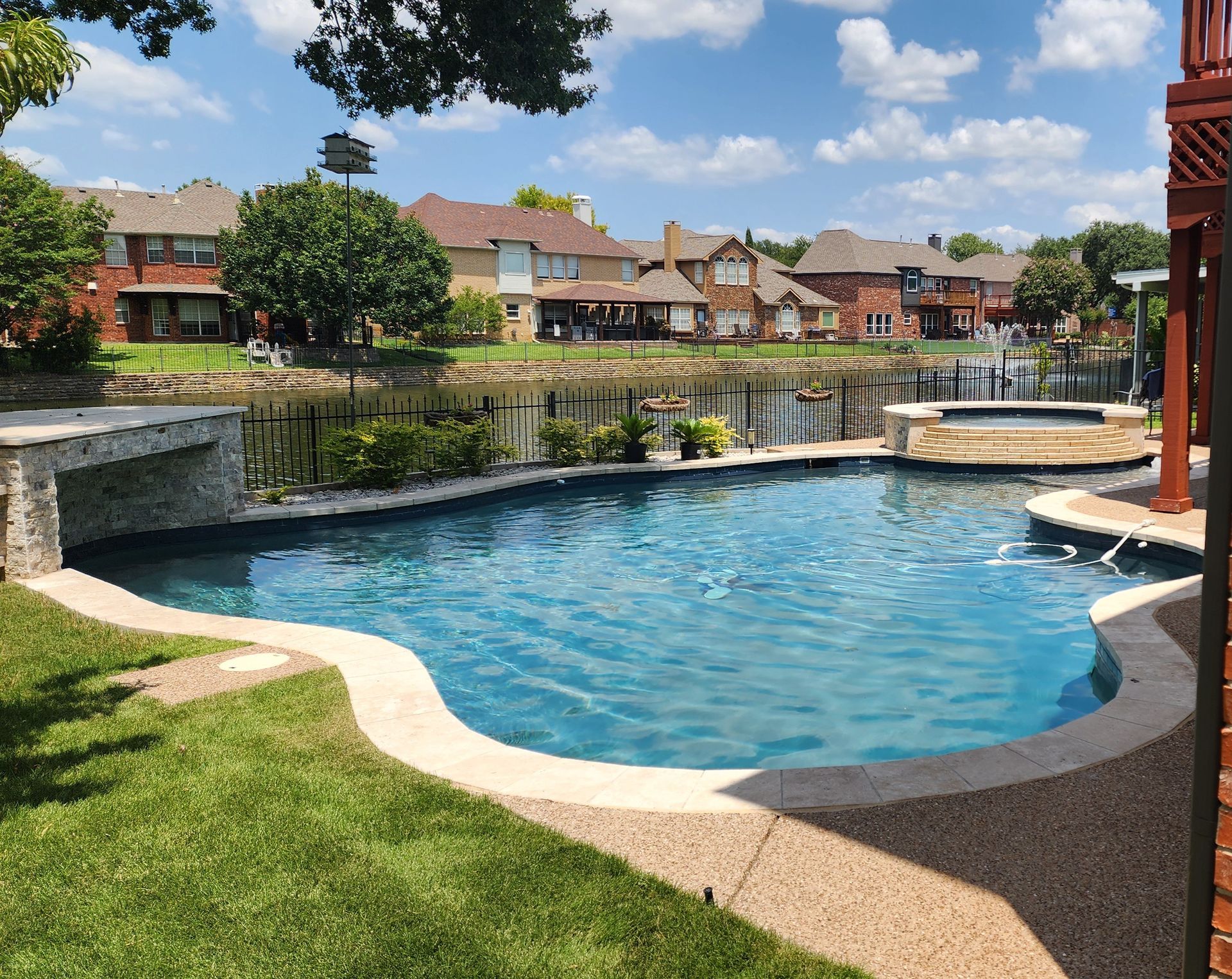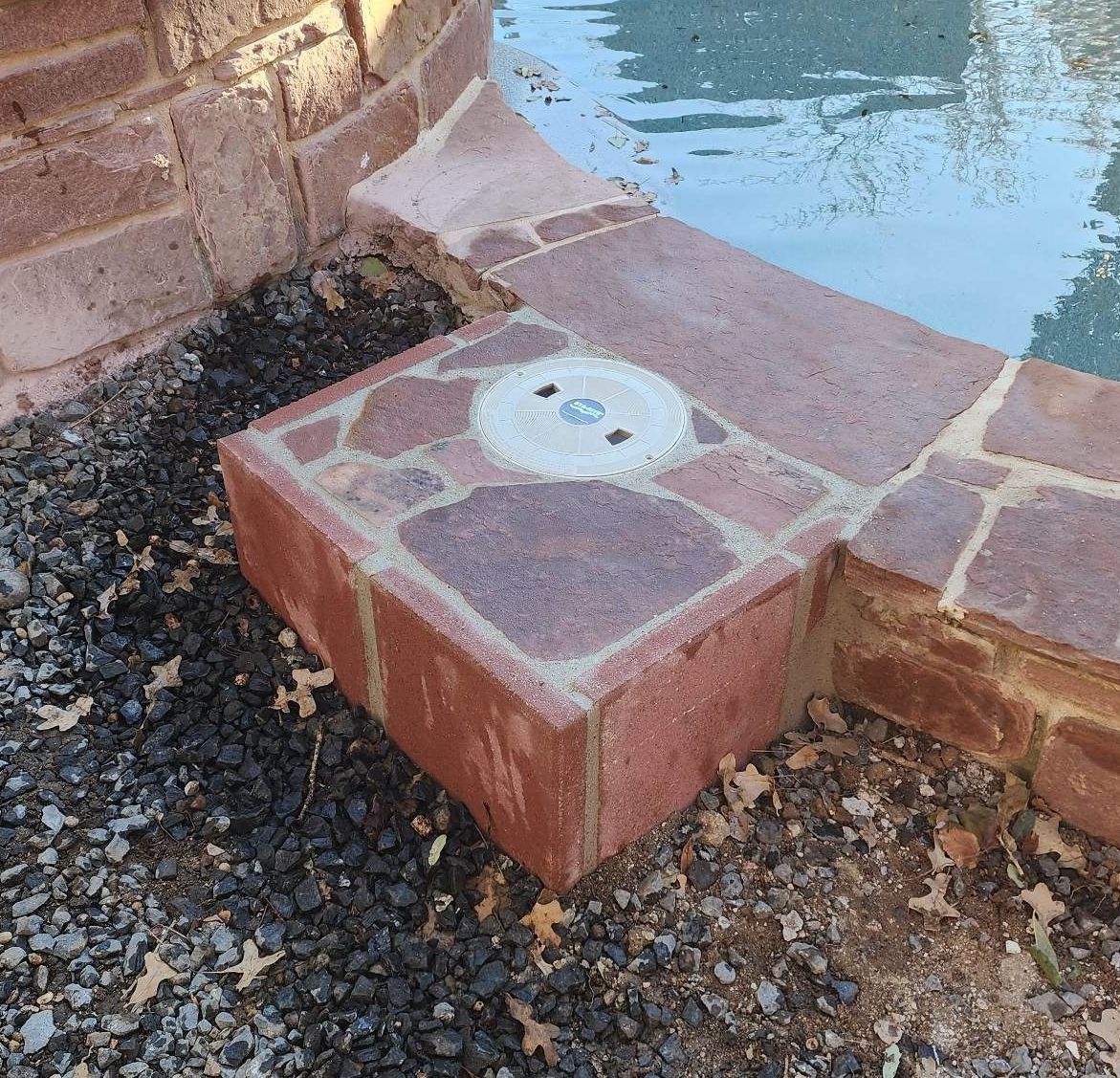Bucket Test: An in-depth guide to test if your pool is leaking
What is the Bucket Test for Pool Leak Detection?
Have you ever noticed your pool’s water level mysteriously dropping? Often, it’s not due to evaporation alone; your pool might be signaling that it has a leak. The bucket test is a simple yet effective diagnostic test for pool owners. Here’s how it works: Place the bucket on the first step of the pool, add a brick or other weight to prevent floating, fill the bucket with pool water until it meets the level of the pool, place it on the first step, and mark the water levels inside and outside the bucket. After 24 hours, compare the levels. If the water outside the bucket has dropped more than the water inside, you likely have a pool leak. By using this test, you can save money on costly repairs.”
To determine whether water loss in your swimming pool is due to evaporation or another issue, rely on the straightforward and dependable bucket test. This diagnostic tool involves using a bucket filled with water, with the bucket’s water level as a critical observation point. Place the bucket in the pool, fill with water equal to the pool level, and compare the rate of water loss inside the bucket to the pool water on the outside. If your pool loses water faster than the bucket, it’s likely you have a leak, compromising the desired stability of the water level.
How to Do A Bucket Test For Pool Leaks:
A Step-by-Step Guide
- Preparation: Before starting, ensure that your pool water is at the proper level and disable any auto-fill devices. You need to be manually filling the pool during any time you suspect a leak. This prevents interference during the test as well. Aim to maintain the correct water level in the pool during the test.
- Bucket Filling: After placing a brick or weight to hold the bucket in place, fill the bucket with pool water until the water in the bucket is level with the water in the pool. The water level in the bucket should match that of the pool for accurate results.
- Bucket Placement: Place the bucket on the first step of the pool. This stabilizes the test and provides clear results for leak detection. Stand in the pool and position the bucket so that it sits about 5 inches below the waterline. This mimics a scenario where you can compare water levels inside and outside the bucket.
- Mark Water Levels: If available use a waterproof marker, or piece of tape to note the water level both inside and outside the bucket. This step is crucial for determining whether the issue is due to evaporation or an actual leak.
- Wait and Observe: Allow 24 hours to pass, then check the water levels. If there’s rain or significant weather changes during this period, repeat the test to ensure accurate conditions. Repeat the observation after each day to ensure leak conditions and to be able to measure the amount of water loss in inches per day.

Evaluating Your Findings: Evaporation vs. Leak Detection
If the water level outside the bucket has decreased significantly more than the level inside, it’s likely indicative of a leak. Conversely, if both levels have dropped by similar amounts, it’s probably due to evaporation.
Following this test, you can estimate the water loss in inches typically by simply measuring the difference from the marking, but if you want to get creative try using our pool water loss calculator to confirm the actual amount down to the gallon.
The bucket test, while straightforward, proves effective when conducted under typical weather conditions and executed accurately. Its primary purpose is to differentiate between evaporation and a potential leak. By performing this preliminary diagnostic test, homeowners can assess whether there’s a likelihood of a leak in their pool. Armed with this knowledge, they can take informed steps, including seeking professional assistance from a reputable leak detection company for precise measures.
Avoid These Common Errors to Ensure Accurate Bucket Test
Unstable Platform Selection: When setting up your bucket test, it’s imperative to choose a stable platform for the bucket. A wobbly or uneven surface can introduce errors by affecting the water level inside and outside the bucket. Consider using a level pool step or swim-out, or a pave stone, flag stone with some smaller stones underneath it at one end (for out of level pools) as your base. Remember, stability is the bedrock of reliable results!
Precise Water Level Marking: Precision matters! Take the time to mark the water levels both inside and outside the bucket with utmost accuracy. Use a ruler or measuring tape to ensure consistency. Even a small discrepancy can lead to misleading results.
Weather Conditions Matter: Timing is everything. Avoid conducting the bucket test during abnormal weather conditions. Rain, extreme heat, or strong winds can alter water levels and introduce bias. Wait for a forecasted calm few days when the elements won’t interfere with your measurements.
What do I do if my Pool Leaks?
- Inspect Common Leak Areas: Begin by thoroughly examining critical components in your pool:
- Fittings: Check all fittings, including skimmer boxes, return jets, and drain covers. Look for signs of cracks, loose connections, or deterioration.
- Pumps and Hoses: Inspect the pump system and hoses. Leaks can occur at pump seals, valves, or hose connections.
- Wet Spots Around the Pool: Investigate areas where the ground is consistently wet. Underground leaks often manifest as damp patches near the pool perimeter.
- Calling in the Professionals: If the leak isn’t obvious or accessible, it’s time to seek expert help:
- Pool Leak Repair Services: Reach out to professional pool leak repair services. They specialize in identifying and fixing leaks efficiently.
- Leak Detection Specialists: These experts use advanced equipment and non-invasive techniques to pinpoint leaks accurately. Their experience ensures minimal disruption during repairs.
- Manly Maids: As seasoned specialists in leak detection, our certified pool inspectors at Manly Maids can assist you. With years of expertise, we’ll help maintain your pool’s water level and integrity.
How Often Should I Perform the Bucket Test on My Pool?
You can perform a bucket test as often as you like, you can perform them monthly or semi annually, but typically you only need to perform a bucket test when you suspect that the pool is losing water.
This precautionary measure helps prevent minor leaks from escalating into significant issues, significantly reducing water loss in your pool or spa.



